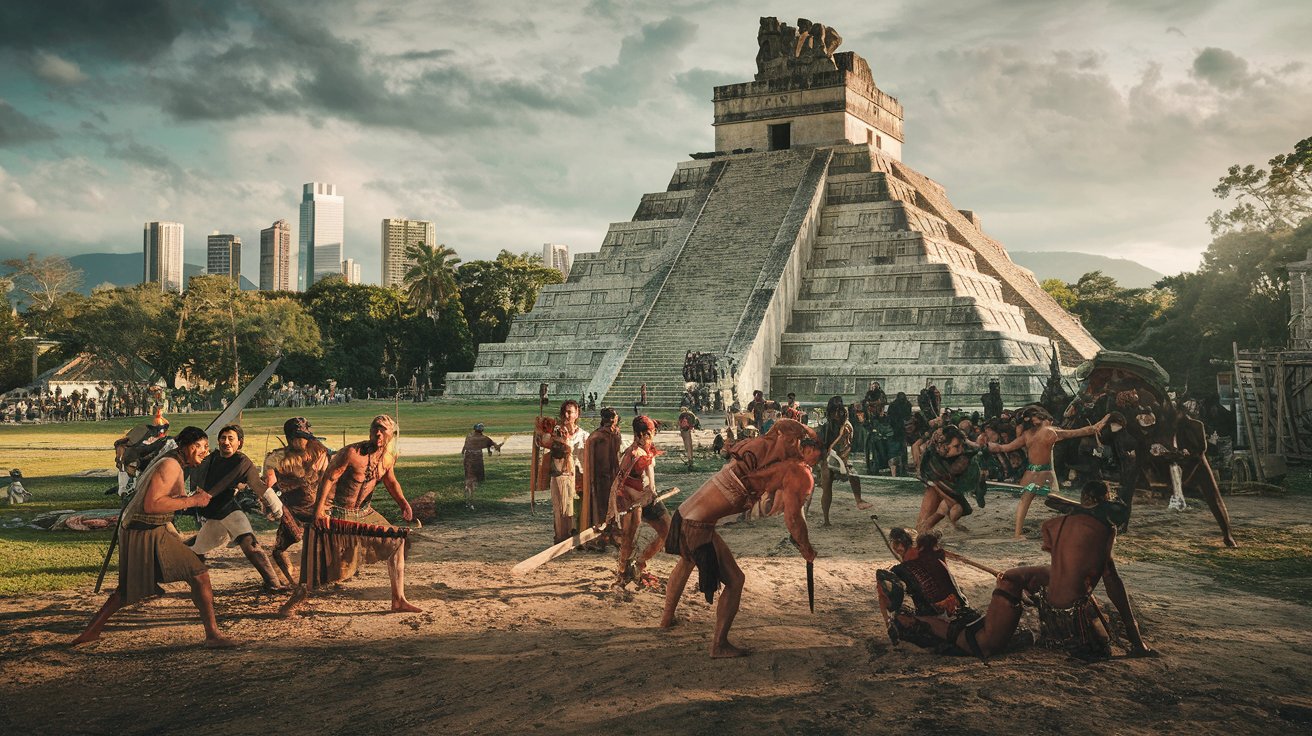
The War Against Nuun Ujol Chaak is a fascinating chapter in history that many people might not know about. This conflict, rooted in ancient Mesoamerican civilizations, showcases the strategic prowess and cultural significance of warfare in that era. Nuun Ujol Chaak, a prominent figure, played a pivotal role in these battles, leaving a lasting impact on the region's history. Understanding this war provides a glimpse into the complexities of ancient societies, their leadership, and their struggles for power. Dive into these 25 intriguing facts to uncover the rich tapestry of events, strategies, and outcomes that defined this historical conflict.
Key Takeaways:
- The War Against Nuun Ujol Chaak was a major conflict in Mesoamerican history involving powerful city-states, territorial disputes, and shifting alliances, leaving a lasting impact on the region's society and culture.
- The war led to population displacement, cultural exchanges, and architectural advancements, shaping Mesoamerican society. Modern archaeology continues to uncover valuable insights about this significant historical event.
The War Against Nuun Ujol Chaak: An Overview
The War Against Nuun Ujol Chaak was a significant conflict in Mesoamerican history. This war involved various city-states and had a lasting impact on the region's political landscape. Here are some fascinating facts about this historical event.
Key Players in the War
Understanding the main figures involved in the war helps to grasp its complexity and significance.
- Nuun Ujol Chaak was the ruler of Dos Pilas, a powerful city-state in the Petexbatun region.
- Tikal was one of the major city-states opposing Nuun Ujol Chaak, known for its impressive architecture and military might.
- Calakmul allied with Dos Pilas, creating a formidable force against Tikal.
- B'alaj Chan K'awiil, the brother of Nuun Ujol Chaak, played a crucial role in the conflict, often leading military campaigns.
The Causes of the War
Several factors contributed to the outbreak of the war, ranging from political ambitions to territorial disputes.
- Territorial expansion was a primary motive, as city-states sought to control more land and resources.
- Political alliances shifted frequently, with city-states forming and breaking pacts to gain advantages.
- Economic control over trade routes and resources was another significant factor driving the conflict.
- Dynastic rivalries fueled tensions, as ruling families vied for supremacy.
Major Battles and Events
The war saw numerous battles and significant events that shaped its course.
- The Battle of Dos Pilas was a pivotal conflict where Nuun Ujol Chaak's forces clashed with Tikal's army.
- The Siege of Aguateca involved a prolonged attack on a fortified city, showcasing the strategic prowess of the warring factions.
- The Capture of Tikal marked a turning point, with Dos Pilas gaining a significant upper hand.
- The Fall of Dos Pilas eventually occurred, leading to a shift in power dynamics in the region.
Impact on Mesoamerican Society
The war had far-reaching consequences for the people and cultures involved.
- Population displacement occurred as people fled from war-torn areas, seeking safety.
- Cultural exchanges increased due to the movement of people and goods, leading to a blending of traditions.
- Architectural advancements were made, with city-states building more robust fortifications.
- Economic disruptions affected trade and agriculture, causing hardships for many communities.
Archaeological Discoveries
Modern archaeology has uncovered many details about the war, shedding light on its history.
- Hieroglyphic inscriptions found in Dos Pilas and other sites provide valuable information about the conflict.
- Artifacts such as weapons and pottery offer insights into the daily lives of those involved in the war.
- Ruins of fortifications reveal the defensive strategies employed by city-states.
- Burial sites discovered contain the remains of warriors and leaders, giving clues about their identities and roles.
Legacy of the War
The War Against Nuun Ujol Chaak left a lasting legacy in Mesoamerican history.
- Political fragmentation followed the war, with many city-states struggling to maintain stability.
- Historical records from the period provide a detailed account of the conflict and its aftermath.
- Mythology and legends surrounding the war have been passed down through generations, becoming part of the cultural heritage.
- Influence on later conflicts can be seen, as strategies and tactics from this war were adopted by future generations.
- Continued research by historians and archaeologists ensures that the story of the War Against Nuun Ujol Chaak remains an important part of our understanding of Mesoamerican history.
Final Thoughts on War Against Nuun Ujol Chaak
The War Against Nuun Ujol Chaak remains a fascinating chapter in history. This conflict, rooted in ancient rivalries, showcases the complexities of Mayan civilization. The strategic maneuvers, alliances, and betrayals highlight the intricate political landscape of the time. Understanding these events provides valuable insights into the Mayan culture and their approach to warfare.
By examining the key battles and leaders, we gain a deeper appreciation for the resilience and ingenuity of the Mayan people. This war, though brutal, played a significant role in shaping the region's history. As we reflect on these facts, it’s clear that the War Against Nuun Ujol Chaak offers a rich tapestry of lessons and stories, reminding us of the enduring legacy of the Mayan civilization.
Frequently Asked Questions
Was this page helpful?
Our commitment to delivering trustworthy and engaging content is at the heart of what we do. Each fact on our site is contributed by real users like you, bringing a wealth of diverse insights and information. To ensure the highest standards of accuracy and reliability, our dedicated editors meticulously review each submission. This process guarantees that the facts we share are not only fascinating but also credible. Trust in our commitment to quality and authenticity as you explore and learn with us.
